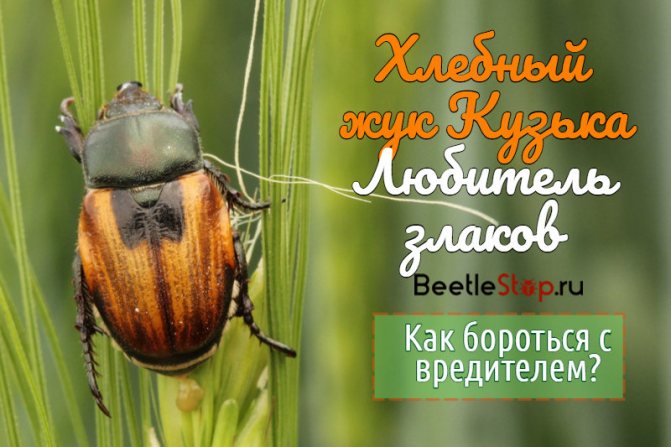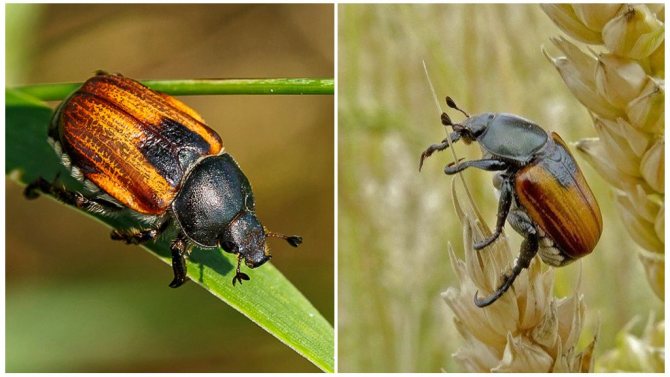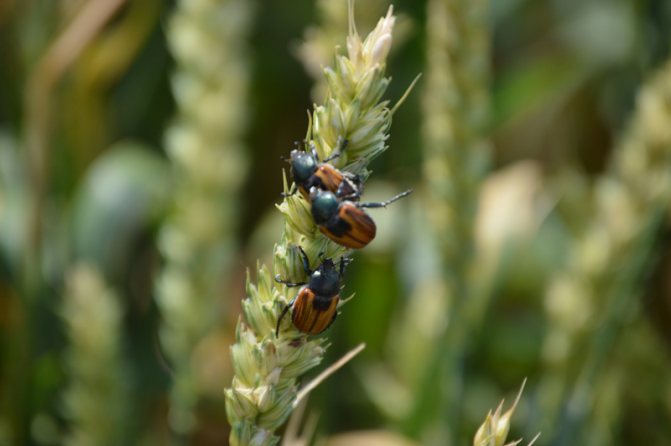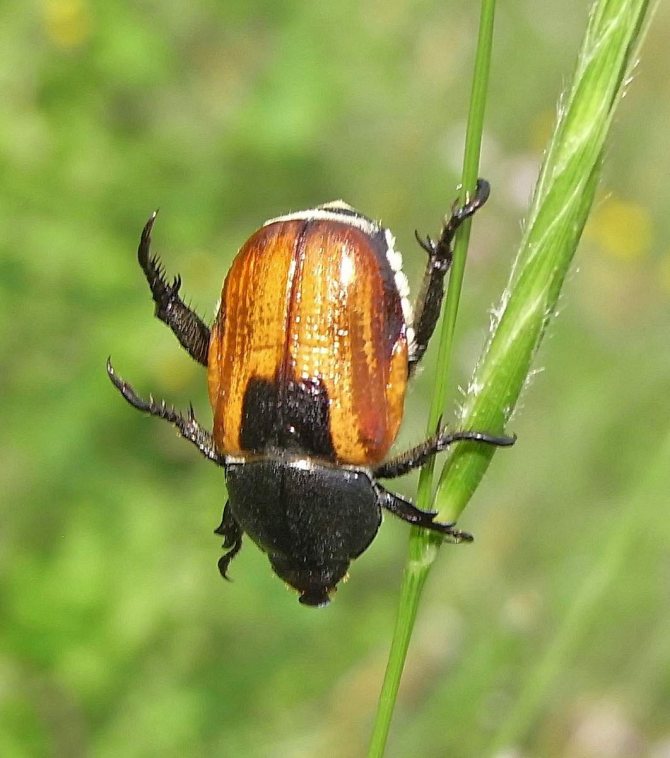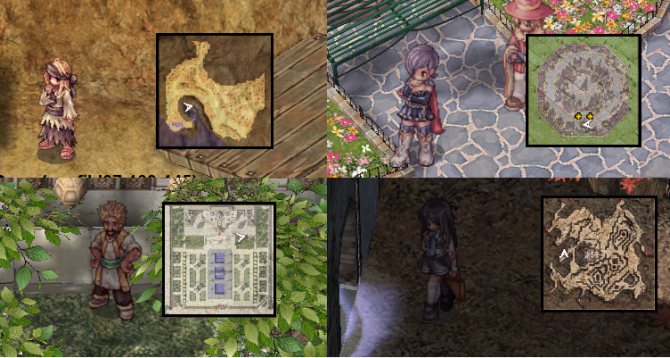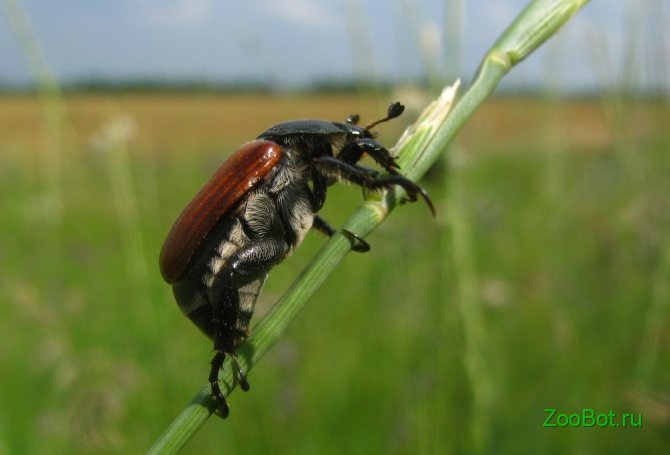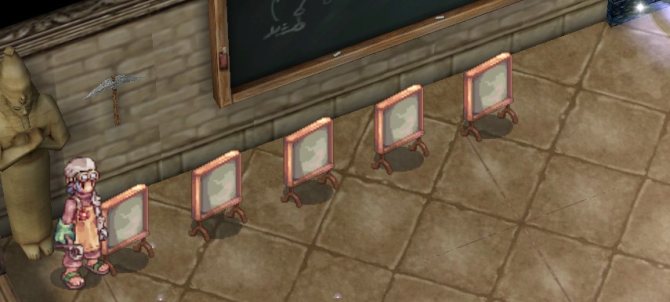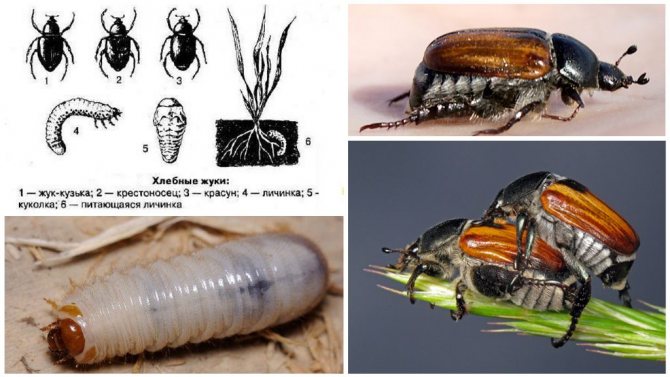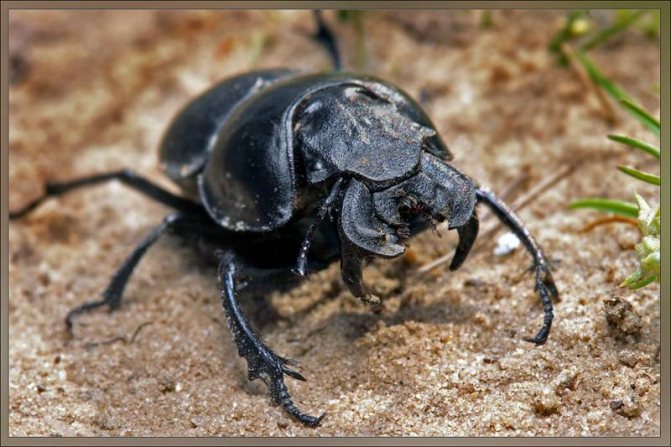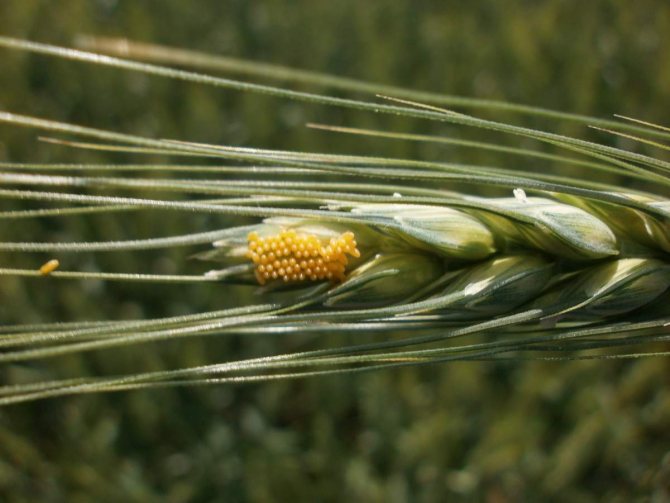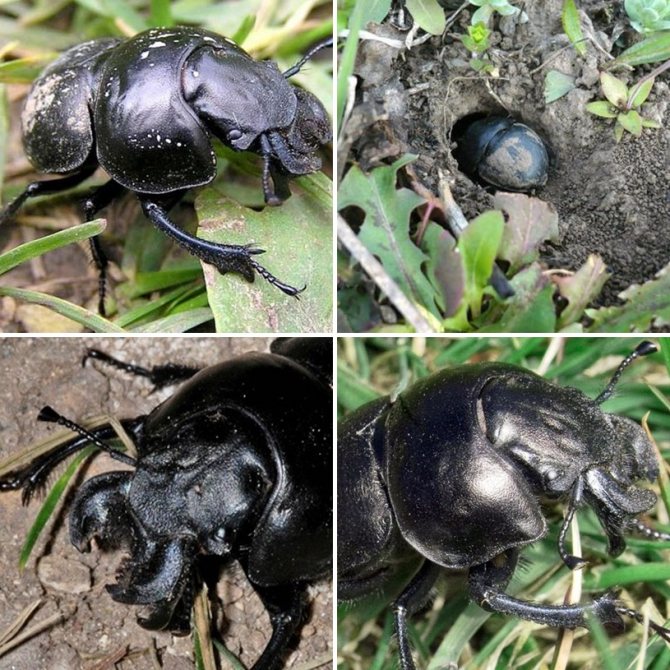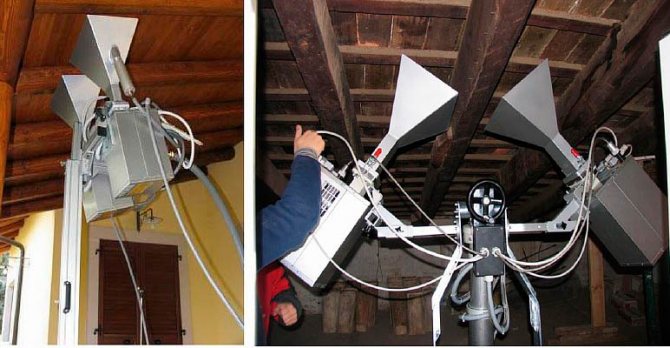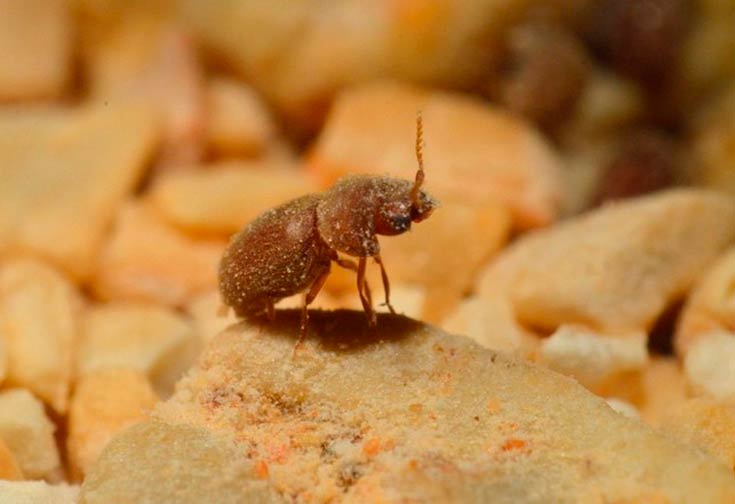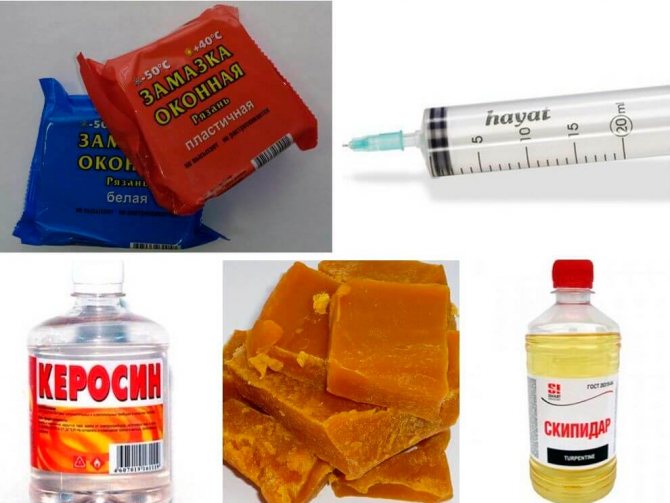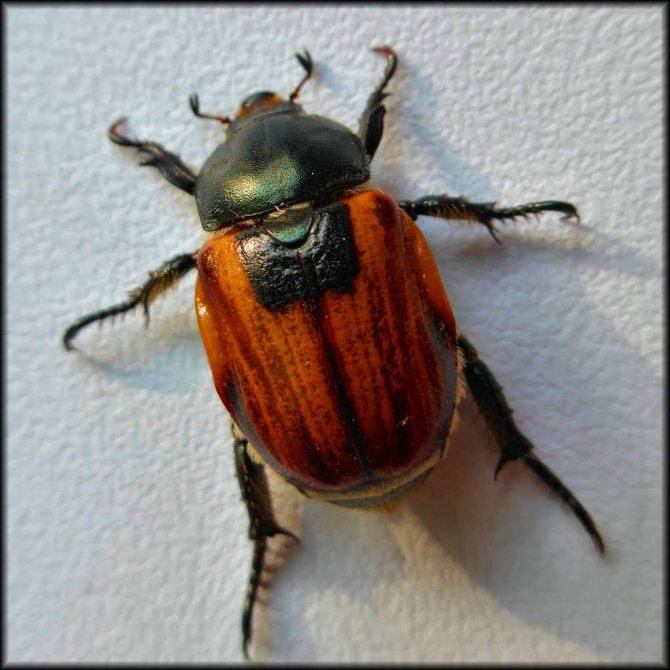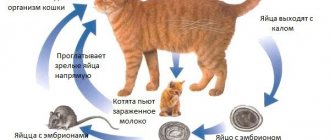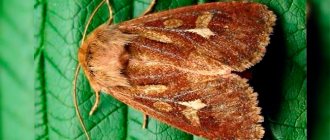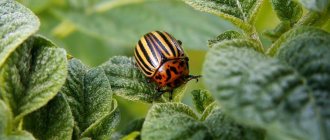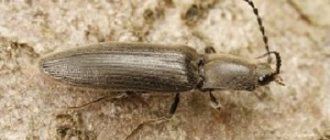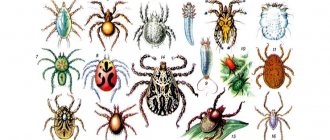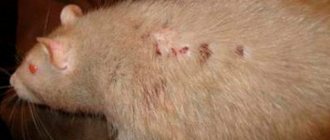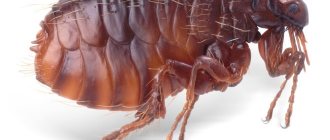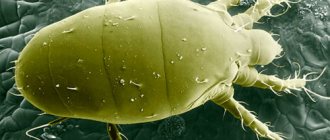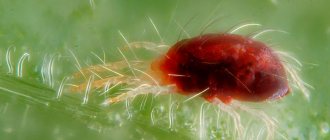Not only we, people, rejoice at our harvest, some also do not mind eating our troublesome grown products. Of course, there are many such people, but let us dwell on one pest, which is popularly called the Kuzka beetle. With his tenacious paws, with the virtuosity of a magician, he touches spikelets, flying from one object to another.
With a special appetite he eats barley, rye, wheat, grains of wild cereals. The larvae are distinguished by increased voracity and, in addition to cereals, eat the roots of beets, tobacco, corn, potatoes, and sunflowers. What does this pest of the national economy look like and is there a way to combat it ?!
You need to know the enemy by sight
In appearance, the parasite is very similar to the May beetle. Belongs to the order Coleoptera and the Scarabaeidae family. If you look at the photo of the insect, then the similarity with the May beetle is obvious. The shape of the body and color are the same, but there are still differences by which you can determine that this is a Kuzka beetle. The photo below is an illustrative example.

The adult has a small body length - about 10-16 mm, which, together with the head, is black. The elytra have a rich brown or yellow-red hue, and closer to the edges it turns into a dark brown tone. Females have an identifying feature - a small black and triangular spot located closer to the head.
The limbs, which are covered with gray hairs, are well developed and allow you to easily cling to ears of corn when flying from place to place. On the head, you can see small antennae, and on their tips there are flat plates, which, when unfolded, resemble a fan.
At the same time, there is a difference between males and females: in females, the forms are more rounded, while the male Kuzka beetle has hook-shaped claws on its front legs.
Millet mosquito
The larva of the last instar has a black-orange color; an adult has a dark body with a bright
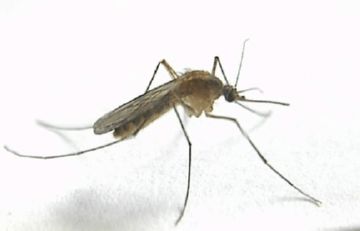

belly. In favorable weather, three or four generations of this pest have time to appear during the spring and summer period. Millet mosquitoes of the first generation lay eggs on weeds in the spring, and larvae develop in them.
Several subsequent generations appearing during the summer populate millet during its flowering. This leads to damage to the grains of the plant (empty grain).
Protection methods:
- weed control with herbicides;
- treatment of breeding centers of mosquitoes with insecticides.
Lifestyle
The entire life cycle, from the laid egg to extinction, lasts a little over 2 years. Moreover, for a rather long period of time, the pest is at the larval stage (22 months). After pupation, still young individuals leave the ground, and almost immediately they begin a period of active summer. According to various fittings, it lasts from the last days of May to the beginning of August. Sometimes the deadline can move in either direction by about two weeks.
Insects are especially active on sunny and hot days. Moreover, on an area of one square meter, you can count from 3 to 5 individuals, or even more. With the coming of night, they hide in cracks in the soil or under earth lumps. The Kuzka beetle likes to sleep a little longer, and prefers to crawl out of hiding no earlier than 9 o'clock in the morning.
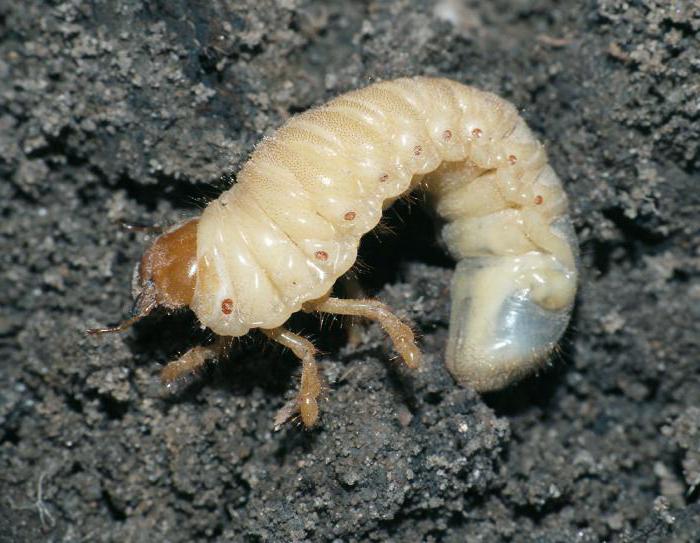

When beetles fly from place to place, they can be heard by their characteristic buzzing.The peak of a strong appetite comes at 3 pm. At this time, the heat begins to subside. If the weather is cold outside, insects prefer to stay in their hiding places.
Control measures
Agrotechnical
- Stubble plowing followed by deep autumn plowing.
- Inter-row cultivation of row crops and fallow. [one]
Mechanical
Collecting beetles by hand or by means of small-scale mechanization. [one]
Chemical
Timely treatment of crops with insecticides. [one]
In addition, when writing the article, the following sources were used: [3] [9]
Leave your review:
Reviews:
Compiled by: Grigorovskaya P.I.
Last update: 07.12.17 20:57
Reproduction
The mating period begins two weeks after the beetles emerge, the process itself takes place on plants. Then the female is removed to lay eggs. Tellingly, the number of females is twice the number of males.
To lay off its offspring, the seedling (female) buries itself in the ground (mainly soil type of soil is chosen) to a depth of 15 cm, directly under the place where it used to feed. At the same time, she does not lay eggs all at once, but usually in 2-3 doses. Each clutch contains 30-40 embryos. Thus, the fecundity of a female can reach more than 100 eggs. Having finished the case, the mother dies there.
In appearance, the eggs have a white matte shade and an oval shape, and on top you can see a dense leathery shell. The size is very small - no more than 2 mm.
Stages of development
Beetles go through several stages of development:
- eggs;
- larvae;
- pupae;
- an adult.
The eggs ripen for up to three weeks. At the same time, a large amount of moisture, as well as its lack, has a detrimental effect on the offspring. The hatched larvae are dazzlingly white in color, but they darken as they mature. For clarity, the Kuzka beetle is shown below. The photo shows how it looks in the larval phase.


The head of an adult larva takes on a darker shade. For the first time, they lose their skin at the end of summer, and the next year they undergo two more molts.
The larvae live mainly in the ground, and the depth to which they submerge depends on the degree of humidity and the ambient temperature conditions. In spring and autumn, they occur at a depth of 1-5 cm, practically at the very surface, and they are very easy to find. But if there is a drought or frost passes, the larvae deepen by 25-30 cm.In cold regions, they burrow even deeper for wintering - about 80 cm.
The source of food for small larvae are small roots or rotting plant debris that just get to them. The diet of older larvae consists of plant roots. All bread beetle larvae that have successfully passed natural selection after two years in the ground begin to prepare for the next stage.
To transform into a pupa, the larva equips for itself an oval shelter at a depth of 15 cm.At this moment, they become especially vulnerable to light, as well as to changes in temperature and humidity.


The adult stage begins after 2-3 weeks of maturation of pupae. However, at first, young beetles still have soft elytra and the cover is still not strong enough. Young individuals still spend several days in the ground until they are completely stronger, and then come to the surface. After that, you can catch a Kuzka beetle on wheat at a meal.
Distribution area
A seemingly cute beetle gives many gardeners a lot of trouble. These parasites have adapted to live in Asia and Europe. But their most favorite place is the southern part of Russia and the countries of Western Europe, mainly in Italy and Hungary. But they also like places like the Balkan Peninsula, Siberia and Asia Minor.
On the territory of the CIS countries, they cause serious inconvenience to residents of the Podolsk, Kherson, Yekaterinoslav, Kharkov regions, including a number of other regions. But over the past 30 years, their habitat area has slightly expanded towards the north-east: Vladimir, Saratov, Kazan regions. Also, beetles feel good in the Caucasus or Transcaucasia.
Beetle harm
The harm from the Kuzka beetle is not inferior in terms of damage to its competitor, the Colorado insect. The only difference between them is that the former specializes mainly in cereals, while Leptinotarsa decemlineata eats potato leaves.


The harm from the beetle is unimaginable, and damage to cereals is caused not only by adults, but also by larvae. Despite its short life cycle, one mature beetle can eat up to 180 grains (or 10 spikelets). And if you imagine how many of them there are in total, then what will be the yield losses ?! Moreover, the main danger lies not only in eating grains, but also in the fact that beetles are able to knock them off the ears to the ground. In this regard, the figure 180 may increase to 400.
According to the average estimates of experts, the bread beetle is capable of destroying a crop of 1.1 hectares of winter cereal. Spring wheat may suffer even more - up to 2.3 hectares.
Kuzka Khlebny and Kuzkina's mother: historical facts and hypotheses
In search of the origin of the name "Kuzka" I came across an amusing hypothesis that does not answer the question, but offers a version of the interpretation of the expression "show Kuzka's mother."
A certain candidate of philological sciences Nikolai Pavlov says the following:
- Kuz'kina's mother is an old and very figurative peasant expression. "Kuzkoy" in Russia has long been called the bread beetle, the terrible enemy of grain. His larva - the very "Kuz'ka mother" - lives very secretly, it is almost impossible to get to her.
It is a perfectly acceptable explanation, given that the kuzka at one time greatly spoiled the life of the peasants.
One forum says that Dahl's dictionary does not mention either Kuzka or his mother, and provides an interesting historical and entomological reference.
The homeland of Kuzka is considered to be the South Russian and Hungarian steppes. Previously, they were huge spaces, mostly covered with feather grass. But wheatgrass - the main food of the wheat grass in the wild - did not grow there.
As the steppes were domesticated, wheatgrass began to grow well on plowed, but unseeded fields (fallows), and the kuz'ka khlebnoy acquired a vast field of activity (moreover, a “field” both in the literal and figurative sense).


Kamasutra Kuzki Khlebny
And then our beetles tried wheat, rye and barley and quickly realized that they would be much sweeter than wheatgrass, by human efforts they cover vast territories and, which is especially pleasant, are available for much longer periods than wheatgrass, to which they were previously attached life cycle.
Actually, this was the beginning of the victorious march of Kuz'ka Khlebny across the Russian land.
All of the above events took place at the turn of the 18-19 centuries, and the first indications of the dangers of the bread beetle appeared in the 1840s. Here is a possible explanation for the lack of expression in Dahl's dictionary and, accordingly, confirmation of the above hypothesis of Nikolai Pavlov.
Can you protect your crop?
The war with such parasites has been waged for a long time and is associated with certain difficulties. The fact is that beetles spend most of their life in the larval stage and bury themselves to a certain depth, which reliably hides them from detection.
In modern agriculture, different methods of struggle are used:
- carrying out inter-row tillage (the best period is the last days of May - early June);
- harvesting at the earliest possible date;
- the use of insecticides (the effectiveness has been proven over 10 years of use);
- carrying out early autumn plowing.
Among insecticides, such products as Metaphos, Chlorofos, Sumition and Decis extra are very popular.
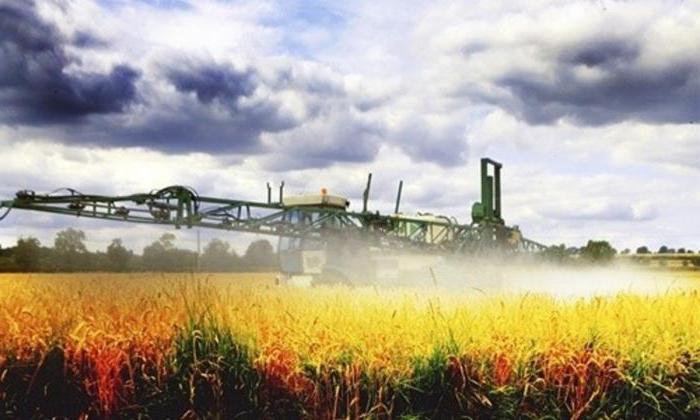

Only such a measure to combat the Kuzka beetle is carried out about 20 days before the start of the harvest, no later than. In this case, the death of insects reaches 90%.
Chemicals and Preventive Measures
To combat the Kuzka beetle, chemicals, insecticides are often used, despite the fact that folk methods are more effective. To combat the pest, it is necessary to use sufficiently toxic substances in high concentrations, but they begin to destroy insects already after the beetles have begun to damage the ears.
The best drugs for the Kuzka beetle:
- Karate Zeon. This preparation is safe for animals and people, therefore it is possible for them to process both plants in the fields and already harvested grain. It enters through the protective shells of the beetle's shell and affects its nervous system. As a result, the beetle stops eating. The next stage is the death and paralysis of the pest. The drug is ergonomic in that it is produced in granules for diluting the suspension, it is perfectly stored and does not have a pungent odor. When spraying the ground part of the plant, approximately 200-300 liters per hectare are spent.
- Parachute. This drug also leads to the death and paralysis of the beetle, but does not harm plants and humans. It is especially effective for hidden insect species. The effect of the drug begins already in the first 2 days after the end of the spraying. But the beetle becomes addictive, based on this, it is recommended to change the insecticides.
- Ephoria. The drug actively combats insects and enters the sap of plants, which significantly increases their resistance to negative environmental factors. In addition, if the beetle does not get the drug, it dies at the end of the feeding period.
Some drugs are used to treat seeds even before sowing in order to prevent the appearance of beetles, but these preventive measures do not always help. Much more often, the beetle has to be fought after the end of its appearance.
It is unrealistic to disinfect all the land in the fields, therefore, they resort to such methods as regular post-harvest plowing of the land. It allows you to get rid of some of the eggs and larvae.
More information can be determined from the video:
PESTS on RASPBERRY. Methods of control WITHOUT CHEMISTRY (Raspberry FLY, BEETLE, GALLITSA and Dolgonosik)
The enemy of my enemy is my friend
Fortunately, the pest has enemies that we can call our friends. The larvae of the Kuzka can be eaten by shrews and other beetles. When plowing fields, they can be on the surface, which can attract the attention of some birds: gulls, rooks, ravens and jackdaws.
Other birds will not refuse to feast on adult beetles:
- starlings;
- sparrows;
- shrikes;
- pike-holes;
- storks;
- hoopoe.
Predatory flies and wasps also pose a serious threat to cereal lovers. Small worms can get inside the larvae, which also leads to their death. Thanks to them, the number of pests is not particularly off scale.
Wheat opomisa


The front sight is rusty-yellow, up to 4 mm long. The eggs hibernate in the soil, with the onset of spring, larvae emerge from them, which bite into the stalks of cereal crops, making moves in them.
Damages winter wheat, rye and barley. In plants affected by opomisa, the leaves first dry, and then the stems.
Ways to fight:
- seed treatment with insecticides;
- selection of the optimal timing for sowing.
The reason for the massive development of the national pest
Paradoxical as it may sound, the reason for the large-scale development of these parasites comes from ourselves. Some time ago, only wheatgrass was included in the diet of the Kuzka beetle, and the number of individuals was minimal, since after its flowering there was no other suitable food.
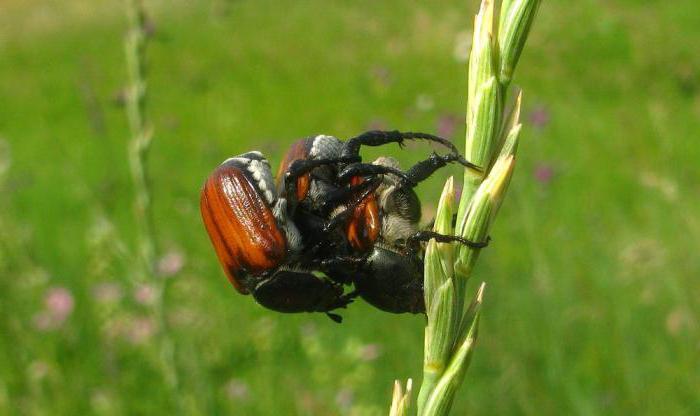

Over the years, agriculture began to develop, which made it possible for insects to taste new food. As you can imagine, they especially liked it. In addition, poor cultivation of fields only affects the benefits of pests.



